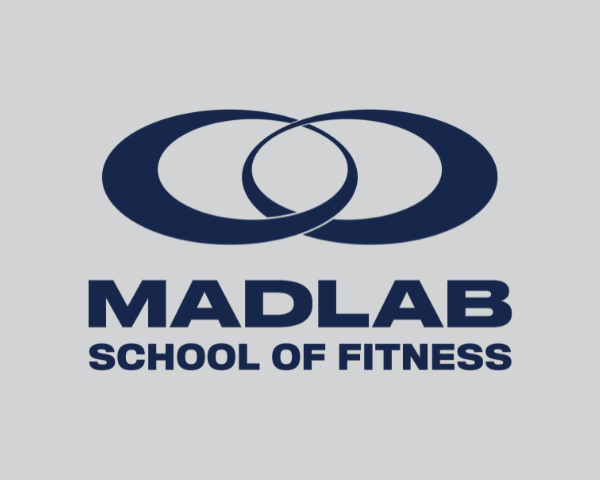WANT TO MAKE MORE MONEY AND HAVE PAID VACATION AS A FITNESS COACH? BE PART OF A MADLAB COACH CO-OP
The concept of making a professional wage and taking paid vacation is all but a foreign one for a coach working in a gym.
Typically, in order to get paid you have to work the hours. And if they’re on-floor hours working with people, they tend to be hard hours, meaning they require a lot more energy than soft hours, such as tasks like sending emails or putting up a social media post.
This also means there’s traditionally no such thing as a paid vacation for a personal trainer or group class coach. If you’re not at the gym coaching the people, you’re not getting paid. Period.
But for coaching to become a full-time professional career, which is what we’re striving for, the coach needs to be able to vacation and not have it affect their pay cheque. And in order to stay fresh and avoid burnout, they can’t be on the floor coaching 40 hours a week. This means they need to be making money from their clients, even when they’re not physically working with them—effectively passive income.
This is exactly what the MadLab coach co-op system provides the coach: An opportunity to make a professional wage without working 40 on-floor hours a week and the ability to take a paid vacation.
Coach Co-op Explained
In the coach co-op system, coaches are intrapreneurs with their own book of clients inside the gym, but they work together in a similar fashion to a law or engineering firm (only better as lawyers and engineers can’t scale the clients the way we can).
While they own their own clients, experienced clients can attend any of the coaches classes (each coach coaches 5-8 group classes per week depending on how many clients the coach has). In this sense, coaches take care of each other’s clients; however, each client still has a personal coach to lean on.
Financially, here’s what it looks like for a coach with 60 clients:
- 60 clients pay an average of $300 a month. The associate coach earns an average of 45% on each of these clients, or $135 per client ($8,100 per month).
- To earn this $8,100 this coach must coach 7-8 classes per week and take care of their clients via personal training sessions once per cycle (once every six weeks). These personal training sessions amount to an average of an additional 10 hours of coaching per week. (plus any new personal training clients going through fundamentals, which accounts for another 3 to 6 hours per week). Thus, a total of 20-24 on-floor hours each week.
All in all, that’s fairly manageable: 20 coaching hours, give or take, per week to earn $8,100 a month, or $97,200 a year.
The system then frees the coach up to take a paid vacation. They can do so knowing their clients are still paying their membership fee (and the coach is still getting paid) and are being taken care of by the other coaches while they’re away.
* Typically, coaches simply barter and trade to cover each other’s classes while one coach is away, so although in theory a coach is responsible to pay another coach to cover for them if they are away, more often than not, no money is exchanged, as the barter system tends to work seamlessly among the coaches.
Now let’s consider the coach co-op from the business owner’s end
In short, the coach co-op has four main perks for the business:
- increases client retention
- increases average client value (ACV)
- increases client acquisition (and makes it easier on the owner)
- reduces the headaches the owner has to deal with
Client retention: In the co-op system, you can rest assured each client is taken care of by their personal coach, whose livelihood depends on their clients continuing to train with them as Madlab coaches are paid based on their ability to retain and acquire clients.
- As a result, top Madlab coaches have annual client retention rates well above the industry average at 90 to 95 percent. (99%+ monthly retention)
ACV: Because of the coach co-op model, coaches now have the time and energy to offer hybrid memberships to their clients, meaning regular personal training sessions with each client every six weeks to check in and reassess goals while continuing to learn movements and training focuses that are specific to them. In some cases other personalized services like nutrition coaching and individual program design are offered.
- All of this means they can charge significantly more than gyms whose coaches are coaching 30 group classes a week for an hourly wage.
- Clients at Madlab School of Fitness pay $300 a month for a hybrid membership (as of 2023),
Client acquisition: With strong coach-client relationships in place, it becomes a lot easier to create a referral culture at your gym, making client acquisition a lot easier.
- Further, because the coach’s livelihood is attached to their ability to bring on new clients, coaches are now incentivized to acquire new clients, as opposed to it being the gym owner’s job.
Reduces the headaches: If you’re a gym owner, you have probably wasted a lot of time doing the scheduling, billing, writing blog posts and posting on social media etc etc. But in the coach co-op system, coaches share this load amongst themselves. They sit down and map out their class schedule. In fact, the owner isn’t involved at all. And if a coach is sick or goes on vacation, it’s on them to find a sub. Gone are the days where you receive a text at 11 p.m. from the 6 a.m. coach announcing that they’re sick and leaving you to manage the fallout.
- The same is true of billing: As the owner, you’re no longer chasing down delinquent payments. It’s on your coaches to sort that out. And they do, because if they don’t bill their clients, they don’t get paid.
- Actually, the same is true of any job that normally falls on the gym owner: A poster falls off the wall in the entrance. Do your coaches pin it back up or leave it for you to do? Do your coaches clean it up if a toilet overflows, or do you receive a text message informing you of the situation?
Under the Madlab system, coaches see things that need to be done around the gym, and they do them. Gone are the days where you arrive at the gym with post-it notes waiting for you, telling you three more annoying tasks you need to do that morning.
In a nutshell: The coaches are now in a position to help your business succeed, as opposed to simply being labor costs. And you no longer feel like a micromanager who has to put out fires day and night. Under the coach co-op system you’re freed up to work on the bigger picture business development, all the while you have coaches in your corner building their own business, which ultimately helps your business flourish, as well.
If you found this article helpful and would like to see exactly how these types of strategies could improve your sales and dramatically increase your revenue on a consistent basis,
Copyright © 2023 Madlab Business. All Rights Reserved.



